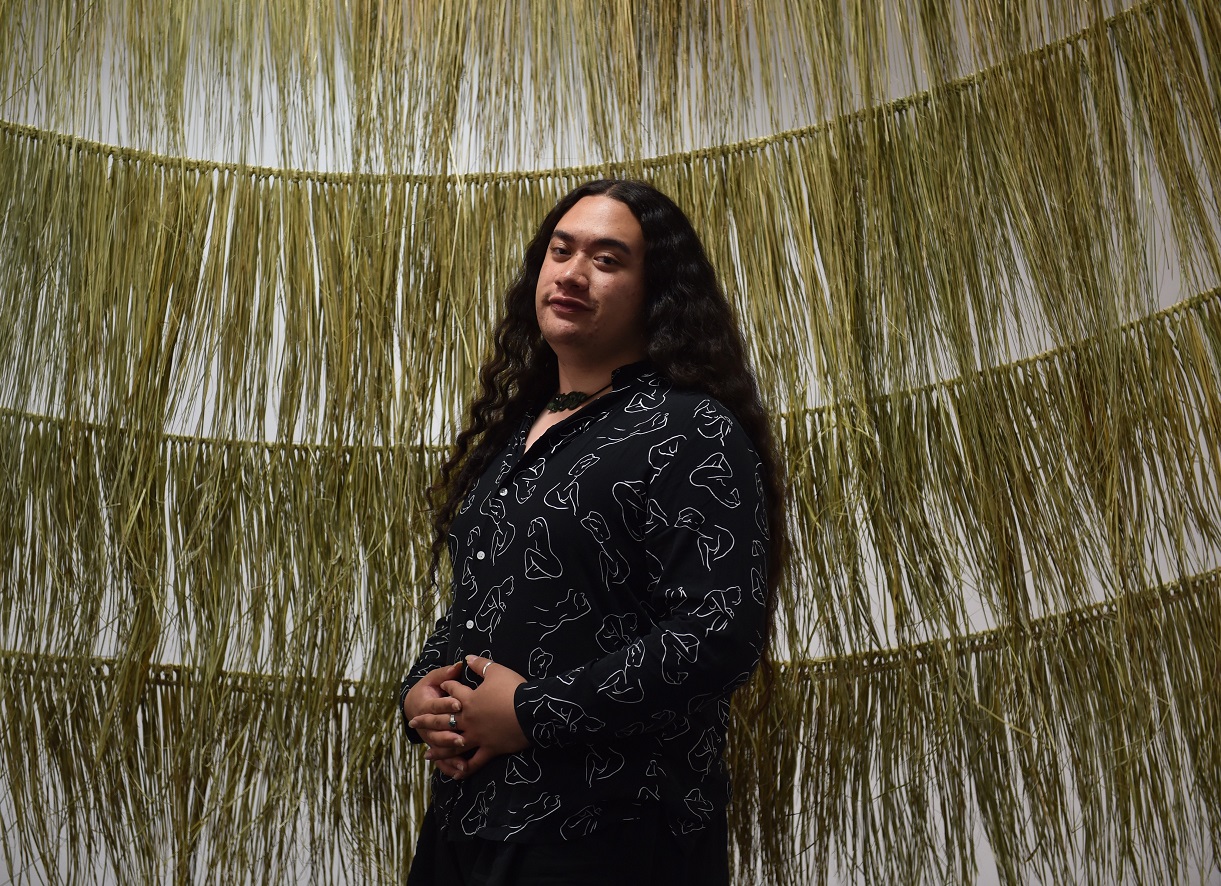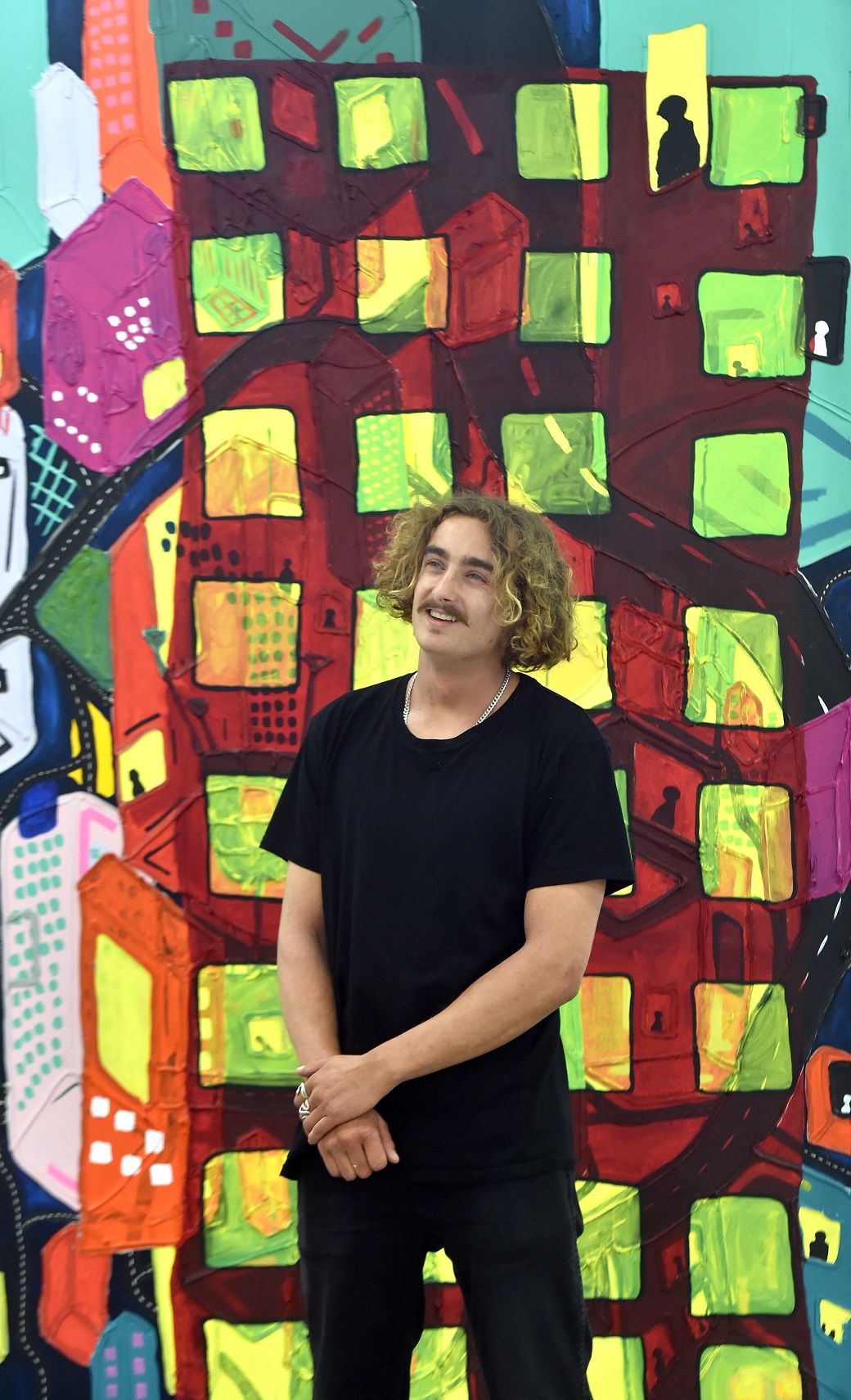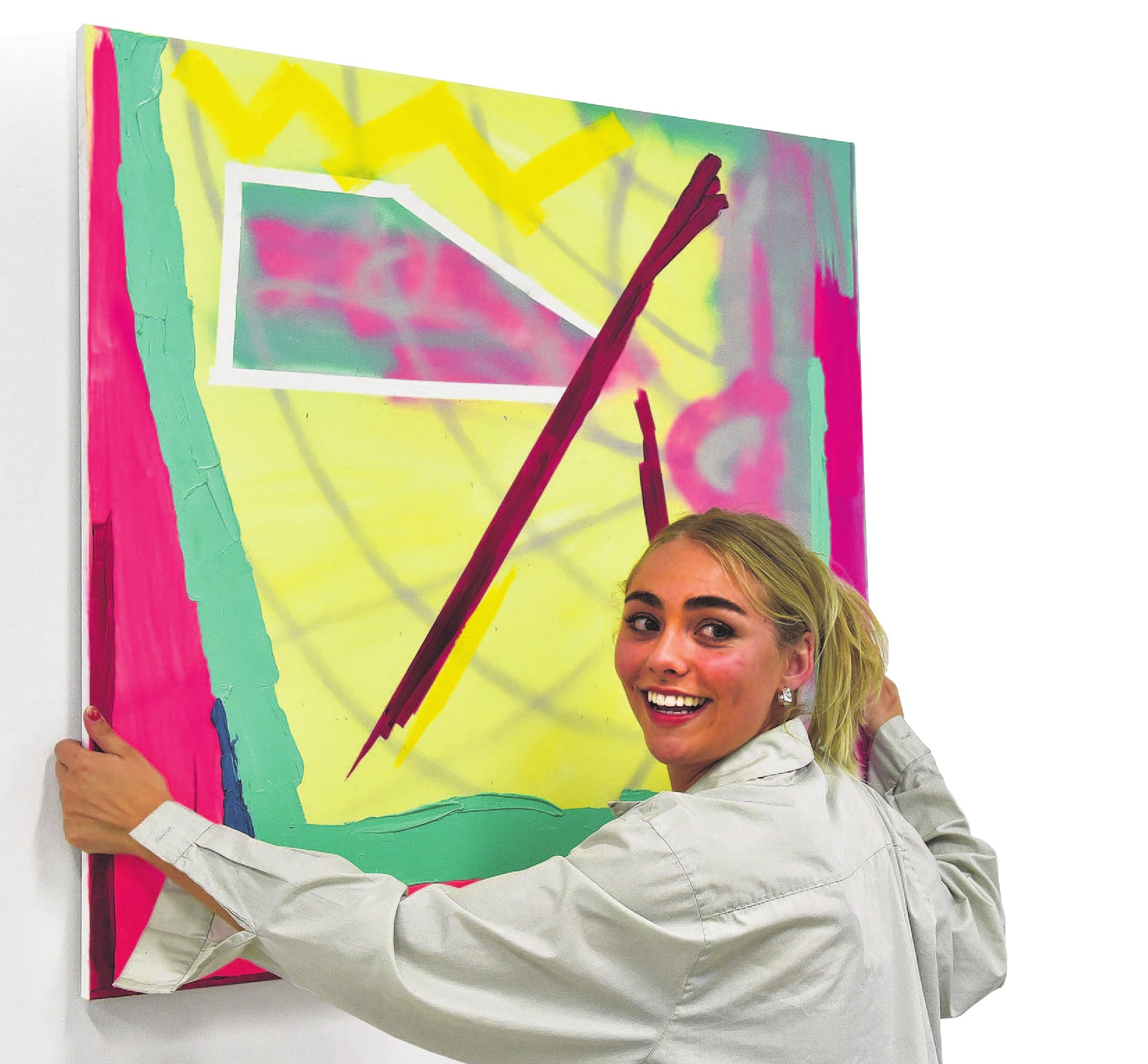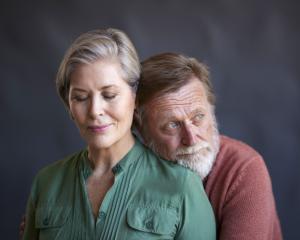
Oliver Hill and Isaiah Okeroa are both from Southland, but their journey to discovering their niche has been a world apart.
Okeroa had always been headed to art school, while it was not until Hill had tried out studying and working that he came to the conclusion a creative vocation was for him.
Hill, who is from Queenstown, left school bound for the University of Otago and a marketing degree.
"I did it for a year and then decided it wasn’t for me. I didn’t even complete the year."
So he headed to Christchurch, where he worked as a jewellery salesman before he came to the conclusion there had to be something more creative he could do.
"Something just clicked. I’ve always been creative. I impulsively decided to come to art school."
After trying out different mediums — he toyed with jewellery making and sculpture — he found painting resonated with him the most. Which is funny, he says, given he was "truly awful" at art through high school.
"I couldn’t paint anything."
He started out painting landscapes but found they did not work for him, so he began to play around with more abstract images.
"I’m trying to produce work that makes you think a lot more. Abstract seemed to work rather well for me."
The landscape aspect morphed into a conversation about the sensory overload of living in a city, translated on to large canvases in vibrant oil colours.
The oversized works add to that looming and overwhelming feeling of a city. The sheer size also gives them a sculptural feel, he says.
"In a city you have loud noises, you’ve got big buildings, vibrant colours, grey colours, so much sensory overload. I feel the large scale pushes the sensory overload on the paintings towards you."
Each work took months to paint and just as much time thinking about.

There were also many layers to the works, as he painted over parts of each work, "erasing" sections of it and starting again, matching those sections to the rest of the composition so it worked as a whole.
The biggest challenges in his works had been funding them, and then painting the top section of the canvas so it was cohesive with the rest.
"Oil paints aren’t cheap these days. It takes five tubes of oil paint for one of these and the canvas on top."
With his degree practically finished, he was making plans to move to Brisbane, having decided a fresh start is what is needed if he is to pursue a career in painting.
Okeroa, though, was planning to stay at art school for post-graduate studies.
His final-year work was filmed in his home town of Invercargill, featuring his family and places special to him, such as the church where he was baptised, Oreti Beach and Sandy Point, and is about his upbringing in Southland.
"My work is very emotionally fuelled. I whakapapa to Taranaki and Waikato. This video is me showing and explaining how being raised away from iwi caused a disconnect with my Maori taonga. It’s very non-absolute and abstract.
"I want the viewer to connect through the imaginary rather than the absolute."
His tertiary studies have enabled him greater understanding of te ao Maori and what it means to be raised away from his iwi, Okeroa says.
"It’s helped me realise and start the journey towards reconnecting and bridging the gaps in my cultural identity."
The film, which features music made by taonga puoro instruments he made, is projected on to a harakeke screen made from four, 3m-long layered woven sections anchored to the ground by rocks.
"Harakeke is a symbol of whanau and is integral to the project. The smell, can you smell the flax? That adds a sensory aspect for viewers. It’s still working with natural elements.
"Even working with the flax has helped me into the te ao Maori perspective."
Electronic art is new for Okeroa, who grew up drawing and loving art. He studied it for NCEA and loved to paint, so going to art school was inevitable.

"I fell in love with it. My first projection did not work well so this is a redemption moment for myself."
For fellow student Ana Rathbone, who grew up in Hawke’s Bay but moved to Dunedin six years ago, it was seeing the work of other students in previous SITE exhibitions that drew her to study art.
"I fell in love with the work."
She will join Okeroa in postgraduate work next year.
"I am feeling a mixture of emotions and I will miss creating art alongside my peers, as we have become incredibly close working in the studio together over the years. This is one of the reasons as to why I have decided to come back next year. "
While painting portraiture has been integral to Rathbone’s practice, art school has enabled her to look deeper into abstraction in all its different forms.
"My paintings are lively and curious snapshots of information that I have absorbed throughout my existence. I create this visual reality through the use of mark making, colour and impasto. I follow the thread of what interests me, excites me and pleases my eye."
She also enjoyed "balancing on a knife edge" when working to express an idea.
"For me, the making part is about finding the line of where things are a conscious input or not, and inviting elements of chance throughout the process. There’s a real potential that every time I make a painting that it could be ruined."
She chooses to use bright neon colours as they are "refreshing" and attention-grabbing.
"I think that it is important for me to express my work through colour [due to] its ability to grab attention quickly, and how it evokes a response in the viewer.
"I feel a certain way when I see colour combining together, creating a more colourful world on canvas. I strive to portray this to viewers, whilst they can additionally create their own interpretation of my work."
To see:
SITE 2022, Dunedin School of Art Public Gallery, November 18,19 and 21.












